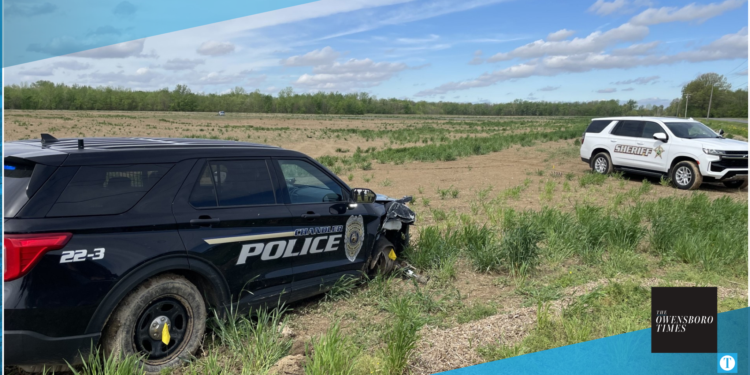The Owensboro Metropolitan Planning and Zoning Commission (OMPC) voted unanimously Thursday night to approve amendments to zoning ordinances that will limit the impact of a proposed solar farm on prime agricultural land in Daviess County and implement stricter decommissioning policies. The decision comes amid opposition from some residents concerned about the project’s scale, potential property devaluation, and the long-term impact on farmland.
NextEra Energy Resources, through its subsidiary Owensboro Solar, LLC, first proposed the solar farm in 2023. The project aims to generate up to 150 megawatts of clean, renewable energy, covering 1,200 acres and creating hundreds of construction jobs. If approved, operations are expected to begin by December 2027.
Daviess County Judge-Executive Charlie Castlen led efforts to balance economic development with farmland preservation. The new zoning amendments cap the use of prime agricultural land at 1,200 acres and exclude flood-prone areas.
“I met with NextEra about four times, and they agreed to every change I proposed,” Castlen said.
The amendments introduce several key restrictions for Level 3 Solar Energy Systems (SES):
- Equipment must be placed at least 75 feet from perimeter property lines, though non-participating landowners can waive this.
- A 150-foot setback is required from any residential structure and 500 feet from any county park.
- All inverters must be located at least 450 feet from residential structures.
To reduce visual impact, projects must be screened with an 8-foot fence and a double row of staggered pine trees, planted 15 feet apart along public rights-of-way and adjacent residences. Barbed wire and sharp-pointed fences are prohibited, and screening must be in place before operation begins and maintained throughout the project’s lifespan.
Decommissioning was also addressed with the introduction of a surety bond system to ensure land restoration.
“The surety bond had to be reevaluated every five years to ensure it covered potential increased costs. It initially stood at $1 million but could be adjusted upward,” said County Commissioner Larry Conder.
Castlen originally proposed a moratorium on solar projects in mid-2024 to revisit zoning regulations, but it was voted down by Commissioners Janie Marksberry and Conder, who cited concerns about property rights and economic opportunities.
Still, Castlen voiced concerns about long-term impacts on farmland.
“Changing prime agricultural land for that long could affect our food supply and reduce local farming capacity,” he said.
However, Castlen also acknowledged the financial incentives for landowners leasing land for solar farms.
Conder emphasized the legality of the project under current regulations.
“If you want to change this, it has to start at the federal level with subsidies,” he said, referencing federal incentives for solar development.
Local opposition has grown, especially among nearby property owners worried about aesthetics, property values, and the scale of the project.
Kimberly Demarest, a neighboring property owner, raised concerns about the size and location.
“While we support the pursuit of renewable energy, the scale of this ordinance raises significant concerns for not only adjacent landowners but the entire Daviess County community,” Demarest said.
She argued that industrial-scale solar farms should be located in industrial zones rather than agricultural areas, citing regrets from communities in Sebree and Robards, Kentucky, over similar projects.
Demarest also criticized the proposed 150-foot setback.
“The proposed setback of 150 feet is unreasonably close, negatively impacting property values,” she said. “Research indicates that large-scale photovoltaic projects can reduce property values by up to 6.9%, especially in larger projects exceeding the size of those previously studied.”
She further urged OMPC to ban barbed wire fencing and install vegetative barriers before construction to mitigate visual impacts.
Jim Riney echoed concerns about farmland use, suggesting alternative sites.
“There needs to be something in the regulations giving preference to conversion of old works rather than prime farmland,” Riney said.
Riney also recommended a 300-foot buffer zone and bonding requirements to cover potential road and drainage damage.
“This is 1,200 acres of construction. It’s going to impact traffic and damage public roadways and drainage systems,” he said.
OMPC Commissioner Bill Weikel warned that rezoning rural land for industrial use could set a precedent, threatening the area’s rural character.
With the OMPC’s approval, the amendments now move to Fiscal Court for consideration.
Fiscal Court will conduct a first reading, including a public hearing, followed by a second reading and vote.
OMPC Director Brian Howard clarified the commission’s role.
“These changes were presented to us through the county judge-executive’s office and his staff,” Howard said. “We enforce zoning ordinances, but the legislative body ultimately approves or denies them.”
However, if NextEra Energy submits a conditional use permit to the Board of Adjustment, the amendments may not apply. Property owners could appeal decisions in Circuit Court, Howard said.



